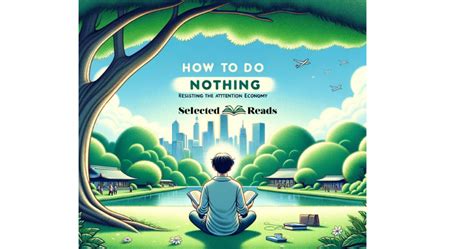How To Do Nothing: A Guide to Rest and Reconnection in Our Hyper-Connected World
In our relentlessly busy world, the simple act of doing nothing feels almost revolutionary. We're constantly bombarded with notifications, emails, and demands on our time, leaving little space for stillness and reflection. But embracing the art of doing nothing isn't about laziness; it's a powerful tool for rejuvenation, creativity, and improved well-being. This guide will help you learn how to intentionally disconnect and rediscover the profound benefits of inactivity.
Understanding the Power of Inactivity
Before diving into practical techniques, it's crucial to understand why doing nothing is so important. Our brains and bodies need downtime to process information, consolidate memories, and repair themselves. Constant activity leads to burnout, stress, and decreased cognitive function. Doing nothing allows for:
- Stress Reduction: Stepping away from the demands of daily life lowers cortisol levels, the hormone associated with stress.
- Increased Creativity: Periods of quiet contemplation often spark innovative ideas and solutions. Our minds need space to wander and make connections.
- Improved Focus: Paradoxically, intentional inactivity enhances our ability to focus when we re-engage with tasks. Rest is essential for sustained concentration.
- Enhanced Self-Awareness: When we're not constantly distracted, we become more attuned to our internal landscape – our thoughts, feelings, and needs.
Practical Steps to Mastering the Art of Doing Nothing
Now that we understand the benefits, let's explore actionable strategies for incorporating "doing nothing" into your daily routine.
1. Schedule Downtime: Treat it Like an Appointment
Just as you schedule meetings and appointments, block out specific times in your day dedicated solely to rest. This could be a 15-minute midday break, an hour in the evening, or even a whole day on the weekend. Consistency is key.
2. Eliminate Distractions: Create a Sanctuary of Stillness
Find a quiet space where you can disconnect from technology. Turn off your phone, close your laptop, and step away from screens. This might be a comfortable chair in your home, a park bench, or a quiet corner of your office.
3. Practice Mindfulness: Engage Your Senses
Instead of focusing on thoughts racing through your mind, shift your attention to your senses. Notice the sounds around you, the temperature of the air on your skin, the feeling of your breath entering and leaving your body. This simple practice anchors you in the present moment.
4. Engage in Passive Activities: Gentle Ways to Unwind
While "doing nothing" implies inactivity, engaging in gentle, passive activities can support relaxation. This could include:
- Listening to calming music: Choose instrumental pieces or nature sounds.
- Reading a book: Immerse yourself in a story that transports you to another world.
- Taking a warm bath or shower: Allow the soothing water to wash away tension.
- Spending time in nature: A walk in the park or sitting under a tree can be incredibly restorative.
5. Start Small and Be Patient: It's a Journey, Not a Race
Don't expect to become a master of inactivity overnight. Begin with short periods of downtime and gradually increase the duration as you become more comfortable. Be kind to yourself and embrace the process.
The Long-Term Benefits of Embracing Inactivity
Regularly incorporating "doing nothing" into your life will yield significant rewards. You'll experience decreased stress levels, improved mental clarity, increased creativity, and a greater sense of peace and well-being. By embracing the art of inactivity, you're not just taking a break; you're investing in your overall health and happiness. It's time to rediscover the power of stillness in our hyper-connected world.
